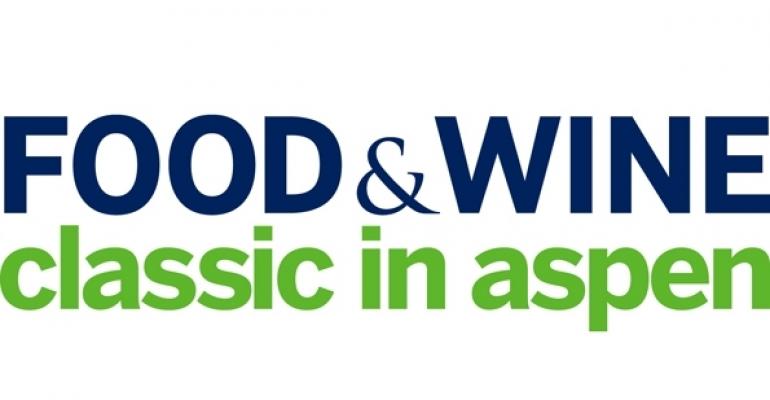During last weekend’s Aspen Food & Wine Classic, I focused on the annual American Express Trade Program and checked out dozens of seminars, beverage tastings and parties around town. What’s trending around the country?
• Meat is still king. At nearly every chef-driven party, the focus was on pork and beef. You couldn’t swing a pig’s tail around any party without hitting a chef with some sort of pork tattoo on his or her arm, leg, neck, etc. Off cuts, by the way, are what interest chefs.
RELATED
• Top chefs dish on Dad's favorite meals
• Chefs, rancher talk nose-to-tail cooking
• More food and beverage coverage at NRN.com
• There’s room for flexitarian influences, too. So many chefs have long lived with the view that meat is king. But there’s a growing contingent who believe that vegetables can be as exciting as meat and should have their own place on the plate. “Nobody needs to eat meat three times a day. Introducing more vegetables into your diet makes sense,” Mario Batali said.
• Keep evolving. New York-based chef Wylie Dufresne said he’s adopted a singular mantra that keeps his business moving forward: Always ask why. “We all do lots of repetitive things in this business, without asking why we do them the way we do. Ask the question and you may end up doing something a better way.”
• Sunday was Father’s Day, and many chefs said they owe their culinary pursuits to the support their fathers gave them. “My favorite taste memory is being with my dad and going into our family garden and picking tomatoes and cucumbers,” says Cleveland-based chef Jonathon Sawyer, who puts Dad’s Tomato Sandwich on his menu at Greenhouse Tavern every summer in honor of his pop.
• Television has become so important in a chef’s career that media training for those who hope to do a cooking demo on The Today Show or Conan is vital. “The product that you’re selling on TV is not the item you’re cooking; it’s you,” advised Boston-based chef Ming Tsai. “So smile until it hurts!”
• Middle America is not necessarily ready to embrace L.A. cool. Lee Maen, who operates more than a dozen ultra-hip restaurants in Los Angeles and elsewhere, says the concepts he creates won’t necessarily translate in Kansas. “For now, we’ll leave that part of the country to Darden Restaurants [parent to Olive Garden, Red Lobster and others].”
• With a growing trend to eat more healthfully, Richard Sandoval, who has 37 restaurants around the country and beyond, says he’s introducing a “Latin Light” menu with items all under 500 calories. “People are more aware of what they’re putting in their mouth,” he said.
Employees, marketing and more
• To train and retain employees, the best restaurant operators leave nothing to chance. Rick Bayless of Frontera Grill, for example, sets aside 15 minutes of every day to do a quick training session. “It can be anything from someone talking about their love of beer, to how a dish was prepared.” Beyond that, Bayless takes a group of employees to a region of Mexico for four days to explore its cuisine. “Everyone comes back exhilarated and excited about what they’re doing.”
• Marketing your brand is no longer enough. Restaurants must get involved in cause marketing, which benefits a worthy cause. But never jump on a bandwagon without doing your homework, The Cheesecake Factory president David Gordon advised. He said Cheesecake spends up to six months researching a charity before committing to a partnership.
• Predictions about the death of tasting menus are premature. “Every night we sell 80-90 tasting menus at Le Bernardin,” Eric Ripert reported. When they are done right, he explained, they allow a chef to tell a story, and customers get it.
• There is no shortage of good employees, even if you operate a restaurant in a college town, ski resort or out-of-the-way location, said Bobby Stuckey, the co-owner of Frasca in Boulder, CO. “Everyone kept telling me I wouldn’t find the talent I need to operate an upscale restaurant in a college town, but I saw examples all around that it can be done. Look at Thomas Keller and what he’s done in Yountville, [Calif.,] in the Napa region.”





